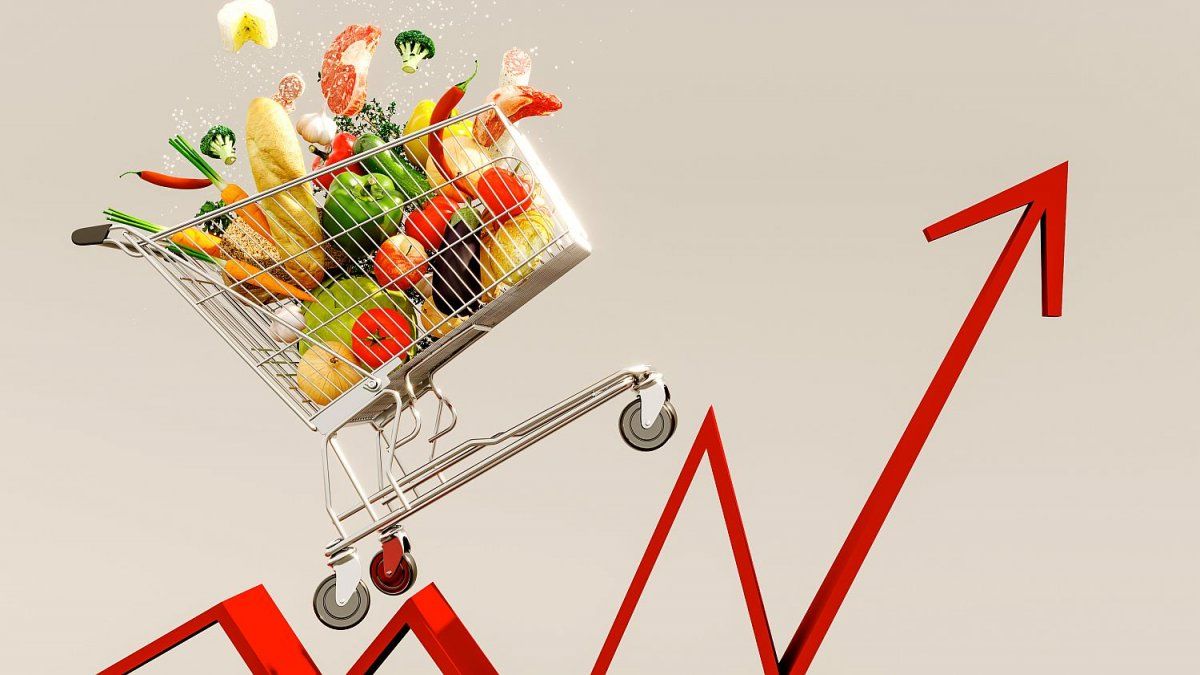The rise in prices in the city of Buenos Aires accelerated in January at a rate of 21.7%. So, the bimonthly accumulated reached 47.4%. The data anticipates what Indec will report next week and is eloquent: neither Mauricio Macri nor Alberto Fernández recorded that level of inflation in the first year of each president’s administration.
The local figure is known a few days before President Javier Milei completes two months in office. The first relevant data of his management was 25.5% of general inflation in Decemberalthough it responds to the national survey and in a month where only two thirds are attributed to its management.
In two months, Milei accumulates more inflation than in a year
However, the particularity of CABA’s inflation is highlighted by the economist and writer of Libertarian Fallacies, Guido Agostinelli: measured under the same CPI GCBA methodology, while between December and January of the Milei administration the increase in local prices was 47.4%Mauricio Macri in his first twelve months of government marked a 44.8% and Alberto Fernández a 30.1%. What the former president belonging to the PRO accumulated in one year was surpassed by Milei in a two-month period.
This being the case, the question arises as to how it is possible to think of an inflationary slowdown that, at a minimum, reaches double digits. First of all, it is necessary to ask if the data serves as a spearhead for what the National CPI will be, measured by the INDEC. Agostinelli understands that the general CPI “will be in the same range”, for the month of January.
In the City, Food and Non-alcoholic Beverages is the sector that marked the greatest year-on-year increase, with 303.1%, and a monthly rate of 25.4%. Within the division, the main drives came from Bread and cereals (27.9%), Milk, dairy products and eggs (28.1%) and Meat and derivatives (17.2%).
At the same time, The Transportation category recorded the largest monthly increase, with 33.7%, and a year-on-year increase of 248.5%. The increase is driven by the increase in fuel.
The pace was followed by the Health sector (30.3%), Recreation and Culture (30.5%) and Restaurants and hotels, which rose to 24.1%. Finally, Housing and Home Services increased 10%, with the promise that next month will bring greater increases.
Intersectoral gaps, the challenge to lower inflation
This is why Agostinelli speaks of a “very big disparity” between segments that, in the long term, will tend to stabilize. “If one sector was very relegated with respect to general inflation, or another much above it, Experience shows then that there will be areas that must increase below and others, such as Education, seek a greater leap to update themselves.”.
The reflection leads to consulting about the possibility of seeing a path marked by the deceleration of prices, which, it is not entirely clear that this can happen. Under this scenario, for Agostinelli the problem lies not so much in the value of inflation, which would go down as a result of the fall in consumption, but on the floor where it could be parked. “That floor is determined by inertia, by contractual inflation,” warns the economist.
Inflation-Prices-Supermarket
Food prices rose sharply.
Ignacio Petunchi
Indexing is seen in all types of contracts. Rentals and UVA credits are two clear examples. “The economy has dragged on for several months, which is why I see it as difficult in the short term to return to single-digit values. A higher floor will probably be set than the one maintained by the previous government.”concludes the economist.
For Emiliano Libman, FUNDAR researcher, “there is still the process of relative price adjustment was not completedFor example, the exchange rate will already be behind.” At the same time, it highlights a limitation in the disinflation goal: “all this is without counting parity“Alfo fundamental because it could imply that inflation does not fall as quickly.” If they were too far behind, the Executive itself would be weakened and the real economy would suffer.
Because it is a thermometer of the inflationary outlook, the discussion is extrapolated to the national level. According to the levelthe REM (BCRA), inflation in February should be 18% and in March 15.3%. If the outlook does not go out of control and breaks with the projections, only in June would Argentina maintain a single-digit price level: 8.2%.
Source: Ambito




